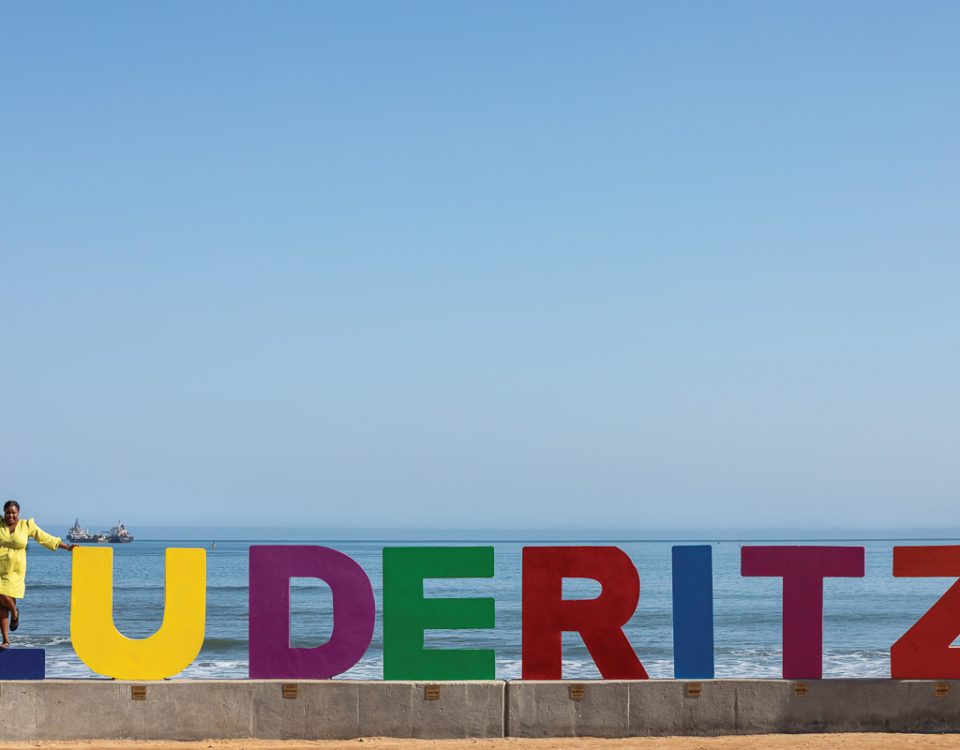
Life on a table recipe #109 – Marianne’s condensed milk rusks
May 3, 2017
A closer look at Big Sky Lodges
May 4, 2017Photographs Namibia Wildlife Resorts | Text Elzanne Erasmus & Annelien Robberts
A SHORT HISTORY OF SOME AMAZING NAMIBIAN LOCATIONS, NOW MANAGED BY NAMIBIA WILDLIFE RESORTS
Our history is an important part of who we are. It has shaped us. It defines us. The events and trials of our past are scattered across the land. Fortresses built, ancient cultures painted across rock walls, battles won and lost, moments turned into memories, never to be forgotten. And just as moments and experiences can live on forever in our minds and hearts, so too can the memory of places, their chronicles, live on for future generations to admire, absorb and hopefully one day think back on fondly.
M any of Namibia Wildlife Resorts’ establishments have carved their footprints into the memory of this country. Resorts such as Okaukuejo, Namutoni, Duwisib and Gross Barmen, each have a rich legacy, well-preserved today. This autumn, TNN looks back on the history and heritage of ten of these establishments. “We are what our past has made us…” Immerse yourself in the memories.
GROSS BARMEN
A Rhenish mission station, of which the ruins still remain, was built on this site in 1844. Missionaries named the station “Great Barmen” after the station’s headquarters in Germany. The mission station in Windhoek was “Barmen”. The original name, however, was Otjikango, meaning large fountain in Otjiherero. Today, nestled on the banks of a tributary of the Swakop and a short distance west of Okahandja, this resort still features hot mineral springs.
/AI-/AIS HOTSPRINGS
Situated at the southern end of the Fish River conservation area, /Ai-/Ais means “scalding hot” in Nama, which refers to the hot springs found in this harsh, stony landscape. Along with the Fish River Canyon, it was first proclaimed a nature reserve in 1968. In 2003, Namibia’s first president, Dr Sam Nujoma, and the former president of the Republic of South Africa, Thabo Mbeki, signed a treaty that officially established Namibia’s first transfrontier conservation area, namely the /Ai-/Ais Richtersveld Transfrontier Park.
HALALI
Opened in 1967, Halali’s name is a German word that is used to announce the end of the hunt by bugle. The only hills in Etosha Park are situated at Halali and were once strategically used by colonial German soldiers to operate a heliograph device to signal their comrades at Fort Namutoni. This also elucidates the name of the waterhole Helio.
NAMUTONI
Travellers who first came upon Etosha Pan in 1851 camped at Namutoni’s waterhole. In 1897 Namutoni became a control post during an outbreak of rinderpest. Thereafter, it remained a frontier post for monitoring trade with Ovamboland. The original fort was constructed during 1902 and 1903, but was burned to the ground in the following year by a group of Ovambo warriors led by Ondonga Chief Nehale, after whom the waterhole was named. The fort was rebuilt in the original design in 1906 and declared a national monument in 1949.
OKAUKUEJO
In the beginning the only inhabitants of this site were the nomadic Haikom Bushmen. The rest camp started as a military outpost founded in 1901, while the tower was added in 1963. In 1953, the first game ranger, BJG de la Bat, arrived and soon afterwards became the Director of Nature Conservation and Tourism in Namibia. Today Okaukuejo is known for its awe-inspiring wildlife and fertility. Colourful legends abound, but it is said that the name, originally Okakwiya, means “the woman who has a child every year”.

WATERBERG
In sharp contrast with the savannah plains below, Waterberg, meaning water mountain, owes its name to the springs on its slopes and the lush vegetation. It became home to a Rhenish mission station in 1873, subsequently destroyed during Nama/Herero wars and rebuilt again in 1891. In 1904, the German-Herero battle took place around this plateau, with the Battle of Hamakari on the forefront. In German colonial times the current restaurant and wine cellar served as police station and prison where many Herero people were held captive.
DUWISIB
From the highest social circles in Saxony, Captain Hans-Heinrich von Wolf and his American wife first lived in tents in Duwisib’s semi-arid, rocky hills. Artisans and masons from Europe were commissioned to assist in building and furnishing their medieval-style castle. Construction commenced in 1908 under German architect Wilhelm Sander. In 1914, Von Wolf signed up for military duty in the First World War and was killed in the Battle of the Somme. His wife, Jayta, never returned to Duwisib.
NAUKLUFT
Intended to conserve the rare Hartmann’s Mountain Zebra, the Naukluft Mountain Zebra Park was established in 1964. In 1979 it was merged with the Namib Desert Park. Naukluft’s name, meaning “narrow gorge” in German, is derived from the steep gorge on the east side of the mountains. In the early 1890s this became the site of a guerrilla war against German colonial troops initiated by Nama chief Hendrik Witbooi.
OLIFANTSRUS
This newest addition to Etosha National Park caters exclusively for camping. Its name means “elephants’ resting place” in Afrikaans, as migrating elephants used to stop and rest at this spot. Ironically, however, a large number of elephants were culled here in the 1980s.
SHARK ISLAND
The rocky promontory between Robert Bay and Lüderitz Harbour served as a concentration camp manned by German colonial troops in their battles against the Nama and Herero peoples. In 1906, approximately 1 800 Nama were taken prisoner, among them their military leader, Cornelius Fredericks. Most of them succumbed due to the horrid conditions, including the cold weather and malnutrition.
Find out how these amazing places have adapted to the modern world! See what they look like today by visiting www.nwr.com.na.
Share your favourite NWR memory with us by tagging @travelnewsnamibia and using the hashtag #inspireNWR

![Duwisib-Castle-07[1]](https://www.travelnewsnamibia.com/wp-content/uploads/Duwisib-Castle-071.jpg)

This article was first published in the Travel News Namibia Autumn 2017 issue.


